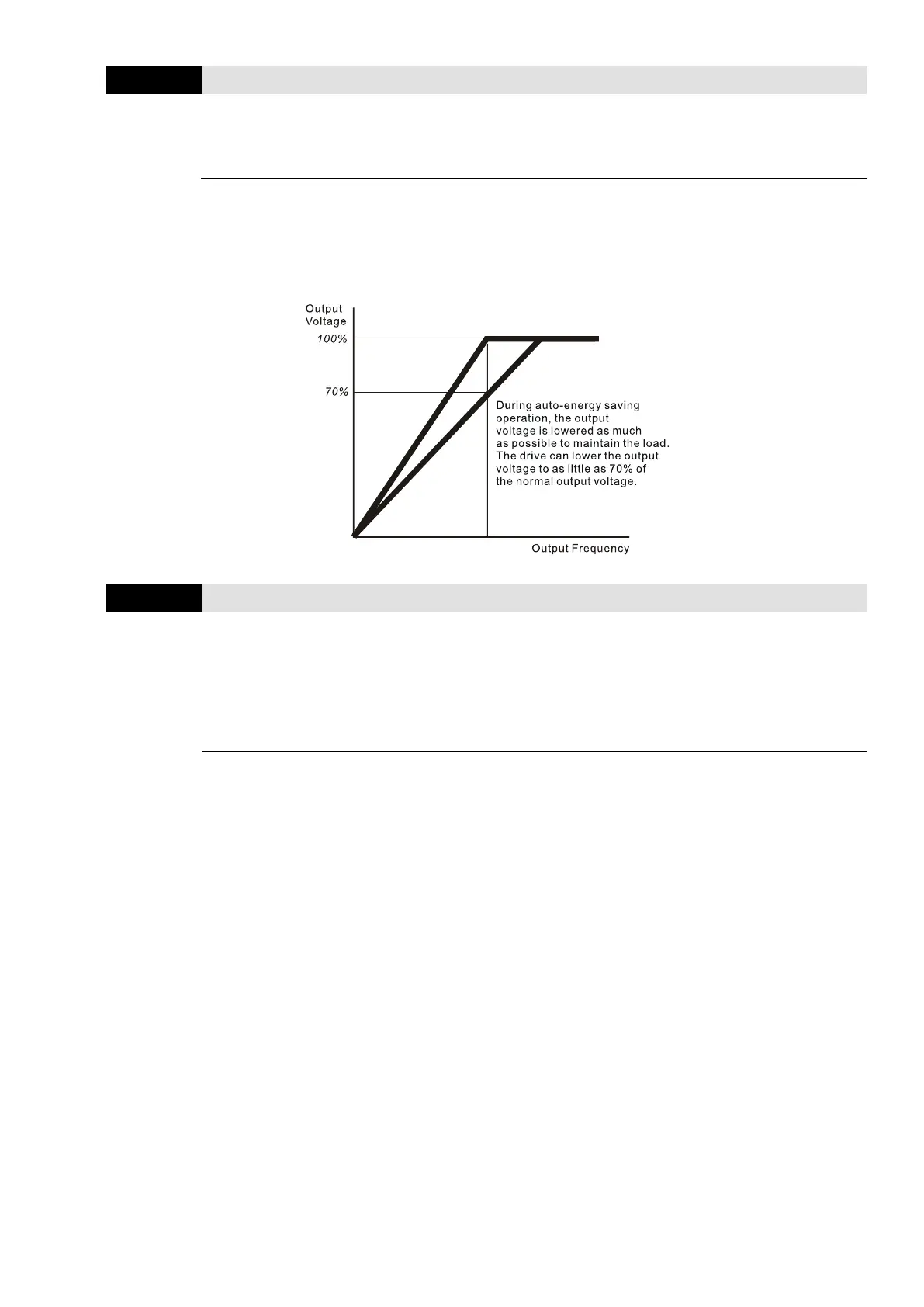When energy-saving is enabled, the motor acceleration/ deceleration operates with full voltage.
During constant speed operation, it automatically calculates the best voltage value according to
the load power. This function is not suitable for fluctuating loads or loads that are nearly full
during operation.
The rated voltage of a 220V motor is usually 200 V
AC
, 60 Hz / 50 Hz, and the input voltage of the
AC motor drive may vary from 180–264 V
AC
, 50 Hz / 60 Hz. Therefore, when the AC motor drive
is used without the AVR function, the output voltage is the same as the input voltage. When the
motor runs at the voltage exceeding 12–20% of the rated voltage, it causes higher temperatures,
damaged insulation, and unstable torque output, which result in losses due to shorter motor
lifetime.
The AVR function automatically regulates the output voltage of the AC motor drive to the motor’s
rated voltage when the input voltage exceeds the motor’s rated voltage. For example, if the V/F
curve is set at 200 V
AC
/ 50 Hz and the input voltage is at 200–264 V
AC
, then the drive
automatically reduces the output voltage to the motor to a maximum of 200 V
AC
/ 50 Hz. If the
input voltage is at 180–200 V
AC
, the output voltage to motor is in direct proportion to the input
voltage.
When the motor ramps to stop, disable the AVR function to shorten the deceleration time. Then,
use with the auto-acceleration and auto-deceleration functions to make the motor’s deceleration
more stable and quicker.

